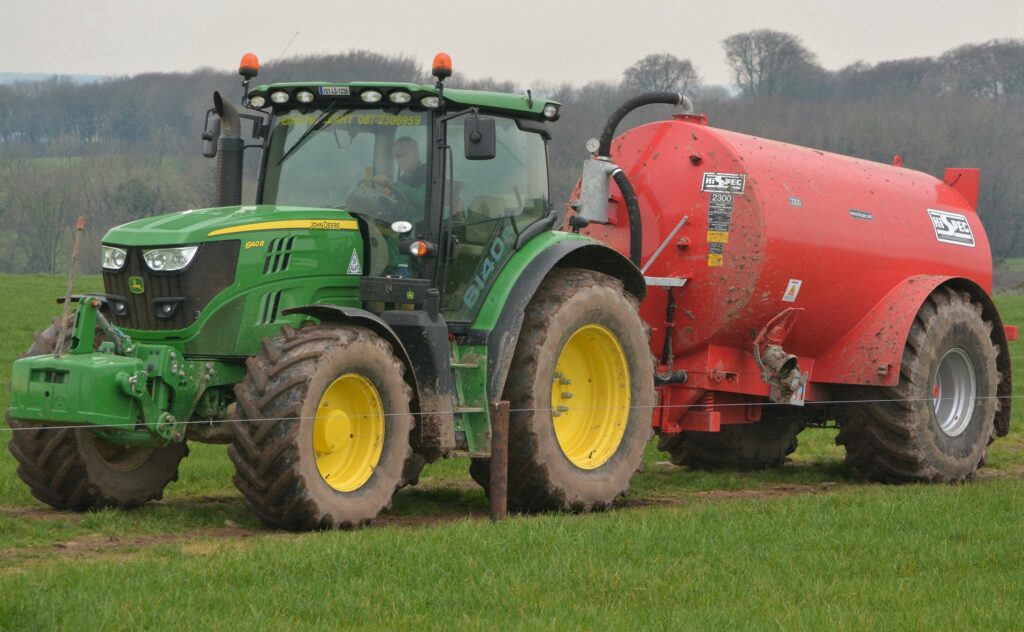Under proposed new European regulations, some slurry tanks could be reclassified as ‘trailers’, entailing a raft of changes to the rules governing how they are constructed and used.
CEMA, the association of European (agricultural) machinery manufacturers, is proposing changes to the current (EU Type Approval) regulations, which have not yet been approved by the European Union.
Though these changes will not be legally binding on manufacturers, they could affect when and how tankers can be used on the road. However, machines or vehicles with EU approval “cannot be banned from on-road use”.
In a draft document (dated March 2019) seen by AgriLand, CEMA proposes that some tankers (i.e. tractor-drawn slurry tankers) would be classified as category ‘R’ vehicles/machines – defined as a ‘trailer’.
- To carry loads;
Or:
- To process materials where the ratio of the technically permissible maximum laden mass to the unladen mass of that vehicle is equal to or greater than three.
At present, a tractor-drawn slurry tanker is typically classified as a category ‘S’ vehicle/machine – defined as ‘interchangeable towed equipment’.
- Designed to be towed by a tractor;
- Changes or adds to its functions, permanently incorporates an implement or is designed to process materials;
- May include a load platform designed and constructed to receive any tools and appliances needed for those purposes and to store temporarily any materials produced or needed during work;
- Where the ratio of the technically permissible maximum laden mass to the unladen mass of that vehicle is less than three.
This category, for example, includes machinery such as mowers, rakes and balers (and would continue to include such machines under the new proposals).
CEMA’s new proposals, contained in the draft document, suggest that some (loaded) tankers should be moved to category ‘R’. However, if only used unladen (not loaded) on the road, tankers would still fall under the ‘S’ classification.
More generally, says CEMA, any towed vehicle that is transporting “cheap bulk material and needs to refill more frequently” would be categorised as ‘R’ – including a “trailer, tanker trailer, loader wagon, forage transport wagon and a manure spreader”.
Any towed vehicle transporting more valuable specialised material would be categorised as ‘S’ – including a “seeder [drill] and fertiliser spreader”. Furthermore, any towed vehicle “declared not to carry a load on the road should be categorised ‘S’ except for trailers”.
The re-classification of some tankers (i.e. tractor-drawn slurry tankers) would have potential implications for their construction and use. That’s because different regulations – in terms of permissible widths and weights – apply to ‘trailers‘ and ‘interchangeable towed equipment‘.
A cursory glance at existing legislation (transposed into Irish law), for example, suggests that the “overall width of a piece of fully mounted agricultural equipment or ‘interchangeable towed equipment’ [category ‘S’] may exceed 2.5m but shall not exceed 3m”.
However, the “overall width of an agricultural tractor or an agricultural trailer [category ‘R’] may exceed 2.5m but shall not exceed 2.55m and the overall width of a large tractor may exceed 2.5m but shall not exceed 2.75m”.
This differs slightly from CEMA’s guidelines, which limit the cargo area of a ‘trailer’ to 2.55m, but allow a total width of 3m.
According to CEMA, the proposals are intended “as a guide to harmonise the categorisation of ‘R’ and ‘S’ vehicles across the EU”.
In any case, stay tuned to AgriLand for further updates.


